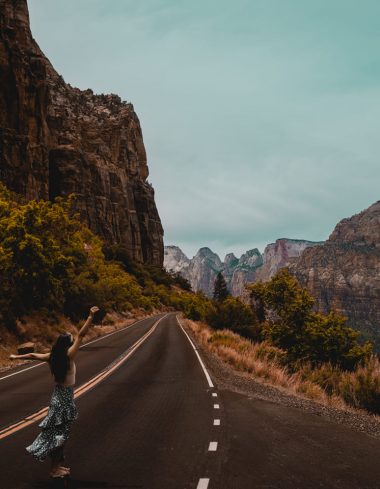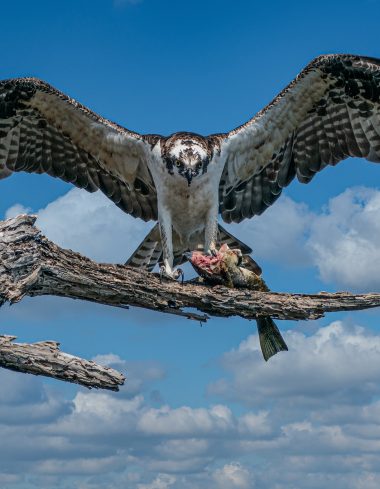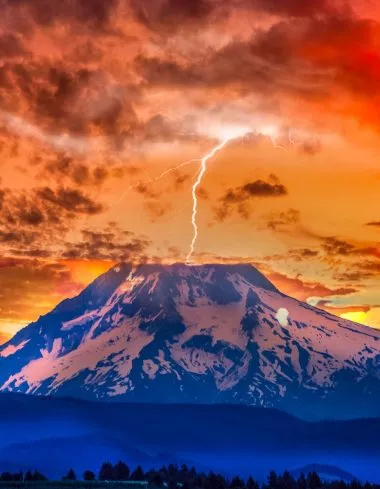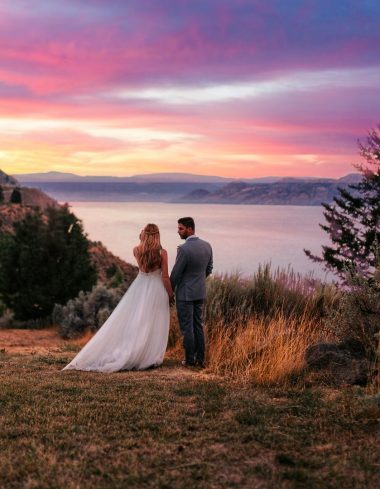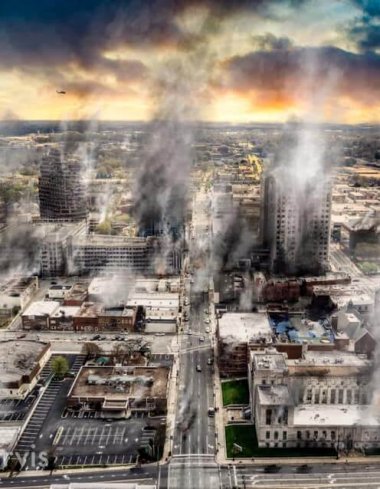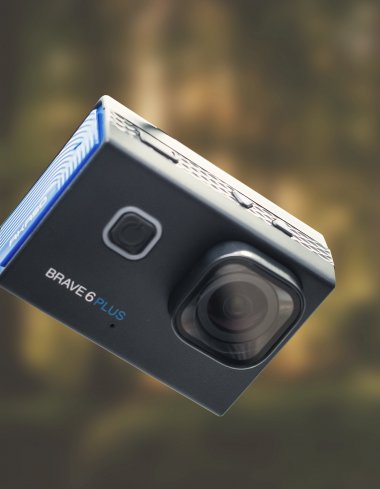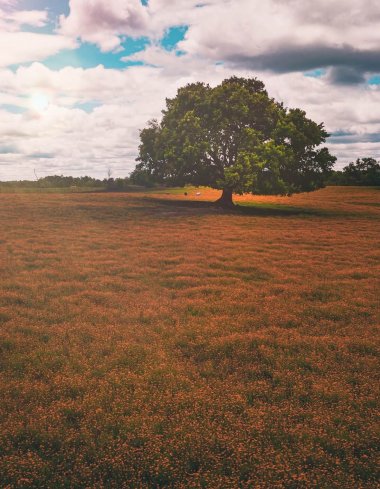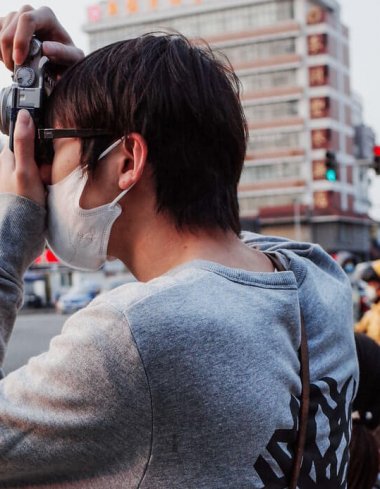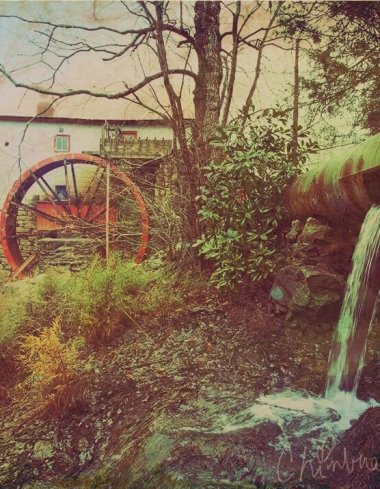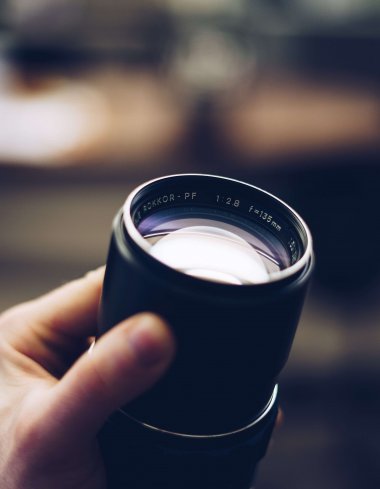Hey everyone! This is Jordan from Sleeklens.com and welcome to this week’s episode of the Sleeklens Photography Podcast and before we move on with the topic of this podcast what I was doing earlier before I recorded, was actually looking through a couple of emails and a couple of stats about the podcast. And one thing that really came through was the “Back to Basics” episode that I recorded a few weeks ago, where basically I spoke about the Exposure Triangle. It seemed that episode really helped a lot of people judging by the emails that came in, as well as the sheer numbers of views that episode had as well as shares. I want to record another “Back to Basics” episode, and this one would be one of the last ones; but I want to cover that I have talked about recently, which is about lenses. Once again, this episode is meant for all the beginners out there that are just getting into photography and just learning about cameras, about the lenses, potentially the lenses they want to purchase.
So, I’m going to cover some of the basic lenses and the basics when it comes to lenses. We’re going to talk about that, and do a great overview of when it comes to the different lenses that are out there.
In this episode, I’m going to cover four different types of lenses: a kit lens, which is sometimes called a standard lens, a wide-angle lens, a telephoto lens, and also a prime lens. Let’s talk about the physical stuff before we talk about the actual lens and what do they mean.
Numbers and other important data we can find
The first thing we are going to talk about is the numbers that are written on the lens itself. So if you go and pick up any lens what you can see is that the front element, the main glass that’s in front of the lens, you are going to see numbers that are written in the inside bezel of that lens. And one of the things that you are going to see is a ratio number, which is kinda like 1:2.8 or 1:3.5-5.6; you are going to see some number like that which is the ratio. What that number means is that the maximum aperture that’s found on the lens. This relates to the last “Back to Basics” episode where we talked about the Aperture – the widest opening, the open
ing and closing of the blades that are in the camera lens to allow more or less light. This is basically going to give you the maximum aperture of the lens. So, if you have a ratio in front of your camera or your lens that says 1/2.8, then the lowest your camera lens can go in what relates to aperture is f2.8. You may see a couple of numbers like that. You can see 2.8-4 or 3.5-5.6, something like that. If you see a number, then a dash, and another number, that’s basically giving you a value, so that’s still going to be the maximum aperture value, but you are going to have what’s called a ‘variable aperture lens’, which means that number can change and we will talk about that later. Essentially, what it means is that as you open, zoom into subjects or something like that, your aperture has to change as your lens only can go so far open basically. We will go in-depth about that later but I wanted to give you a basic insight of the numbers that show up in the camera lens.
Other than that, you are going to see some numbers that are linked to the zoom range. Any kind of lens that zooms-in is considered a ‘zoom lens’; but we are going to see, obviously, the focal length, which would be the actual lens that you bought. Say you have an 18-55, 18mm is the widest you can go, whereas 55mm is the most ‘telephoto’ value you can get out of this lens.
There’s also one other number that a lot of people actually miss, and this is basically for those who want to put filters in front of your lens. So if you look in front of your lens you are going to see the ‘phi’ symbol and a number next to it. That number basically means the diameter of the front of your lens, which is the diameter you need to buy if you are aiming to get a lens filter screwed on the front of your lens. So you may see values like 49, 52, 58 or something like that. So, with that value, you can go to Amazon and search for filters that have the diameter of your lens. It can obviously be any number, but once again what that number defines is the front diameter of your camera lens.
Some lenses have letters like VR or VS, which stand for ‘Vibration Reduction’ and ‘Vibration Stabilization’ respectively. That’s going to be next to what looks like a little switch that’s on the side of your camera lens, and that can help with camera shake, especially if you are doing longer shutter speeds, longer hand-held shutter speeds. If you are working with a tripod it’s probably beneficial to turn that off, but if you are doing a lot of handheld photography that can help you with vibration reduction, to minimize it. Then you are also going to see the Manual Focus or Auto Focus switch; so it’s kinda good to know all the basics around your camera lens.
The Different Types of Lenses
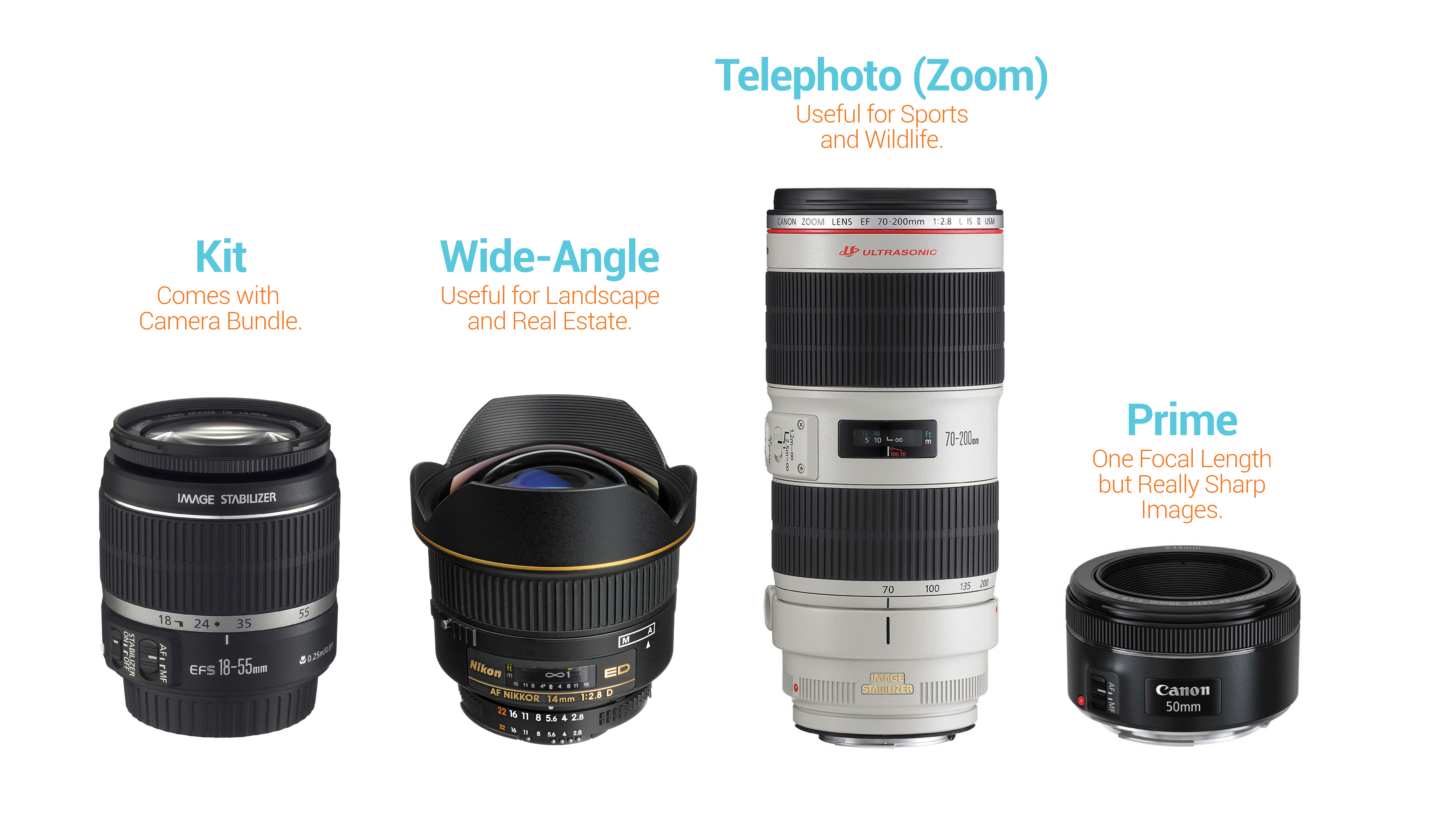
Kit Lenses
Now let’s roll into the different types of lenses that we can go over. And that’s going to be by first checking the ‘Kit Lens’ or ‘Standard Lens’. So, when I’m talking about a kit lens I’m referring to a lens that comes with your camera, in a bundle. If you buy your camera as body-only you obviously won’t get that lens, but if you buy your camera as a bundle you will get a Kit Lens. These lenses can come very differently depending on the camera maker, model, what type of camera you are buying – if it is crop factor or full-frame – but in general if you buy a crop sensor camera you are probably going to get a kit lens that’s most likely an 18-55mm – which is the standard. Obviously, it can vary depending on which bundle you get, but for most is an 18-55mm. For full-frame cameras it’s going to be a 24-105mm, that’s because a full-frame camera has a different aspect-ratio when it comes to lenses, but that’s really not what I’m going to talk about in this episode.
Also with kit lenses, you are going to find that the built-quality is probably not the best. That doesn’t mean that you cannot take good photos out of a kit lens, but what I mean is that I wouldn’t take it to a rainstorm or something similar as it’s not going to be weather-sealed or whatsoever. The glass is not going to be the best, probably not going to give you the sharpest image but again, you can still get away with it. A lot of kit lenses have a good number of photos that are proof of their quality. You can work without problem with a kit lens, especially if you are just starting out; the kit lens is going to give you what you need to really understand your camera.
You are also going to find that with a kit lens most of them are variable aperture lens, so let’s talk about the variable aspect. Basically what it means is that your aperture is going to change depending on whether you zoom-in or zoom-out on the lens that you have. So, let’s take the 18-55 for example. If you have an 18-55 and you zoom out to 18mm that little number that’s in front of your camera lens that we talked about, let’s say it was 3.5, you have a 3.5-5.6. If you zoom out all the way you will see that your aperture will be 3.5, that’s the lowest it can go.
If you slowly zoom-in to 55mm, you are going to see that your aperture is going to change. It’s going to change without you changing it as your camera is going to change it because when you zoom in, the lowest aperture you can have is 5.6. That doesn’t sound like a big deal but especially if you are shooting in low-light situations, and you really need some light to come in, going from 3.5 to 5.6 is a major jump, and can really cut out a lot of your light. So you have to bounce it out to shutter speed, change ISO values or something like that. It can be really beneficial if you have a lens that’s not a variable aperture one, but again, starting out you probably won’t notice a whole lot, but it is something to keep in mind.
Telephoto Lenses
So now let’s talk about the telephoto lenses or the zoom-lenses. These lenses have typically a high focal length, they typically zoom-in to ranges like 100mm to 800mm, and you can even go beyond! (laughs). And these are lenses typically used for wildlife, sports, portraits. Portrait photographers actually use lenses like 70-100, you can really get amazing portraits with a 200 lens if you zoom in all the way to 200mm and the background will have this beautiful bokeh effect, even if it is a variable aperture lens, the focal length is so long that you are basically going to get a really blurred up background.
Documentary photography and street photography are also good topics for these lenses, especially street photography – though the lenses can be somewhat bulky – you can actually get a lot out of it as you can zoom pretty far away and it will compress the background and all that kind of stuff. You will be able to get people’s faces a bit more than if you work with a wide-angle lens.
So one more thing about telephoto lenses that I mentioned before is don’t be fooled by something that says it’s a telephoto lens then it’s going to do a fantastic job for topics like sports photography. Just because it’s a telephoto lens you really have to look at the focal length and, again, any lens can be categorized as a zoom-lens as there is a zoom feature in the lens. An 18-55 can be considered a zoom lens, but when you talk about a telephoto lens you need to think of those lenses that work with values over 100mm, with long focal lengths that really allow you to get close to the subject.
Wide Angle Lenses
So now let’s talk about wide angle lenses. Wide angle lenses can vary on what focal lengths go, and I think I have a wide angle lens glued on the front of my camera the majority of the time. Wide angle lenses are really good for those who shoot landscape, real estate, etc. They allow you to get a ‘wide open’ view of something. So some different ranges for wide angle lenses would be for crop sensor camera is 10-20mm or 10-18mm, something around those ranges. For a full-frame camera you will get something like 16-25mm or 17-40mm, maybe even below that, but usually, that’s the kind of range you stick around.
Again, those are zoom lenses as they technically zoom but not a lot of people consider them as a zoom lens. You can zoom in to get some details but if you aim for larger zoom values what you need is a telephoto lens.
Real Estate is one popular reason to get a wide angle lens. One thing you need to consider when you get a wide angle lens is the corners of your photos. When you have a wide angle lens it’s so wide open that the corners can be very blurry, not sharp or distorted in some ways – that depends on what lens you have. You need to check out the quality of the glass, so don’t think that just because you can find a wide angle lens on Amazon for just $50 you can get a great wide angle lens. Most likely it’s not.
It’s a kind of lens worth to have in your lens kit.
Prime Lenses
The last thing we are going to talk about is a prime lens. A prime lens is probably one of my favorite lens to use, even though I don’t use it as often. Nowadays the reason why I would use a prime lens is if I am doing a portrait of somebody and I really want a blurry, blurry background or if I am shooting video, as it makes your videos look amazing.
So basically a prime lens is a lens that has one focal length. You are not going to see something like 18-55 or similar, but you are going to see a number, let’s say like 50. That means it has no zoom capability, the way you get closer to your subject is by moving your feet towards your subject.
One benefit of a prime lens that not a lot of people think about is that typically prime lenses are super super sharp. The main reason for that is the amount of glass your image basically has to pass through. So if you have a telephoto lens or a kit lens, the amount of glass the image has to pass through can really soften your image. The 50mm prime lens can do a great job by capturing a really sharp image, but obviously, you have to be on focus as well. If you have everything perfectly on focus, then your lenses are going to be super super sharp, which is really great.
Usually prime lenses are found with very wide apertures so one of the most popular ones for beginners that don’t want to spend a lot of money on a prime lens is the 50mm f/1.8, that means the widest you can go in your aperture value is 1.8, and that’s a super shallow depth of field. So if you focus on your subject your background is going to be really milky, significantly blurred out, and that’s going to look really great. It’s a popular option for photographers, Canon has it, Nikon has it, Sony has something similar to that, I’m not sure if it’s exactly a 1.8.
Prime lenses are really great for those who want to get on a different type of lens but don’t want to spend a lot of money, don’t care much about the built quality. For the Canon version, to which I can talk about, it’s one of those lenses that you don’t send for repair. If the glass breaks, if the lens doesn’t focus properly you basically ditch it and get a new one as they are pretty cheap. They make really great great photos if you take care of the lens.
So, that’s a quick round of the kit lenses, the telephoto lenses, the wide angle lenses, and the prime lenses, and what you can use them for. Mainly the prime lenses will be used for portraits, but they can be used to walk around – that depends on what you like to shoot.
So if you guys enjoyed that and you are getting in your camera but not sure exactly what to do again make sure you head up to Sleeklens.com and go to the courses section. You will see a course that is the Complete Course to Beginner Photography and that’s got about 30 videos showing you the basics of all you need to know about lenses, camera basics that we have talked about, photography accessories, a little bit of flash, editing, real-world examples for: real estate, landscape, portrait, food, travel… all kind of stuff in that course. If you want to check it don’t forget to use the coupon SLEEKLENSPODCAST, and that will get you a 10% off anything on your cart.
Thank you guys for joining me on this weekly podcast! It’s really fun to help you all with the photography struggles you may have, and I hope this episode can help you to understand what camera lenses are about. See you next week!




